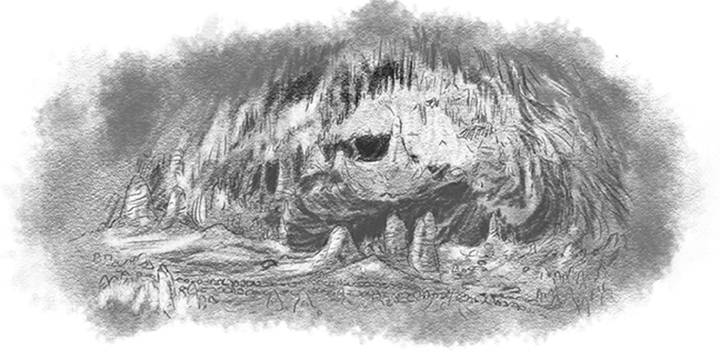The Permian Sea
If you happen to be traveling down US Highway 62/180, just to the Southwest of Carlsbad, New Mexico then you’ll find yourself driving past the entrance to Carlsbad Caverns National Park, one of the Southwest’s most unique tourist attractions.
While many may just think of Carlsbad Caverns as a series of big holes in the ground, the truth behind the site is actually much more fascinating.
Approximately, 250 million years ago, during the Permian era, 20 million years before the dinosaurs showed up, the area was the coastal region for a large inland sea. Back then you would have see a world populated by strange mammal-like reptiles walking on the edge of warm coastal waters, under which lay what is now called the Capitan Reef. The area was filled with a variety of bryozoans, sponges, and other microscopic organisms. Unfortunately, this world would not last as the it was already dying in cataclysmic fashion.
We don’t know exactly what happened, but we have evidence that massive super-volcanoes in the Siberian Traps released enough toxic gases, smoke, and soot into the atmosphere to cause a runaway greenhouse effect, trapping sunlight in and super-heating the earth. This caused a gigantic release of methane from the sea floor, contributing to sea level changes, which in turn lead to depletion of oxygen levels in the oceans around the world, choking life in the sea and the land. Couple this with a few bolide impacts (bright meteors that burn up and usually explode in the atmosphere) and you have the largest mass extinction event in Earth’s history. Roughly 96% of all marine species, 70% of all land vertebrate species, and 83% insect genera died off and the planet was scorched clean with nearly 10 million years passing before recovery started and life began to once again flourish.
Eventually the inland sea waters evaporated and the reef found itself buried under evaporites (water-soluble mineral sediments resulting from the concentration and crystallization during the process of evaporation) and other sedimentary materials. The reef fossilized and remained hidden as new giants took over the land, never knowing the world that died before them. Later, in the late Cenozoic Era (known as the era of mammals), tectonic forces uplifted the reef and water carved out the mountain range into the present shape of the Carlsbad Caverns.
The caverns themselves are comprised of limestone, a sedimentary rock that is mostly made up of the skeletal fragments of ancient marine organisms. These are the same marine organisms that made up the ecosystem of the Permian sea that the Carlsbad area was once a part of.
When you walk into The Big Room, the loving nickname given to the cave’s largest chamber, you are walking into (and onto) the past, stepping on the bones of those ancient creatures that came before you. The experience, when combined with the knowledge of how the caverns were formed, is truly magnificent and humbling.

